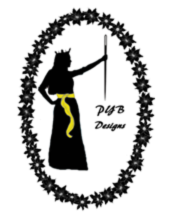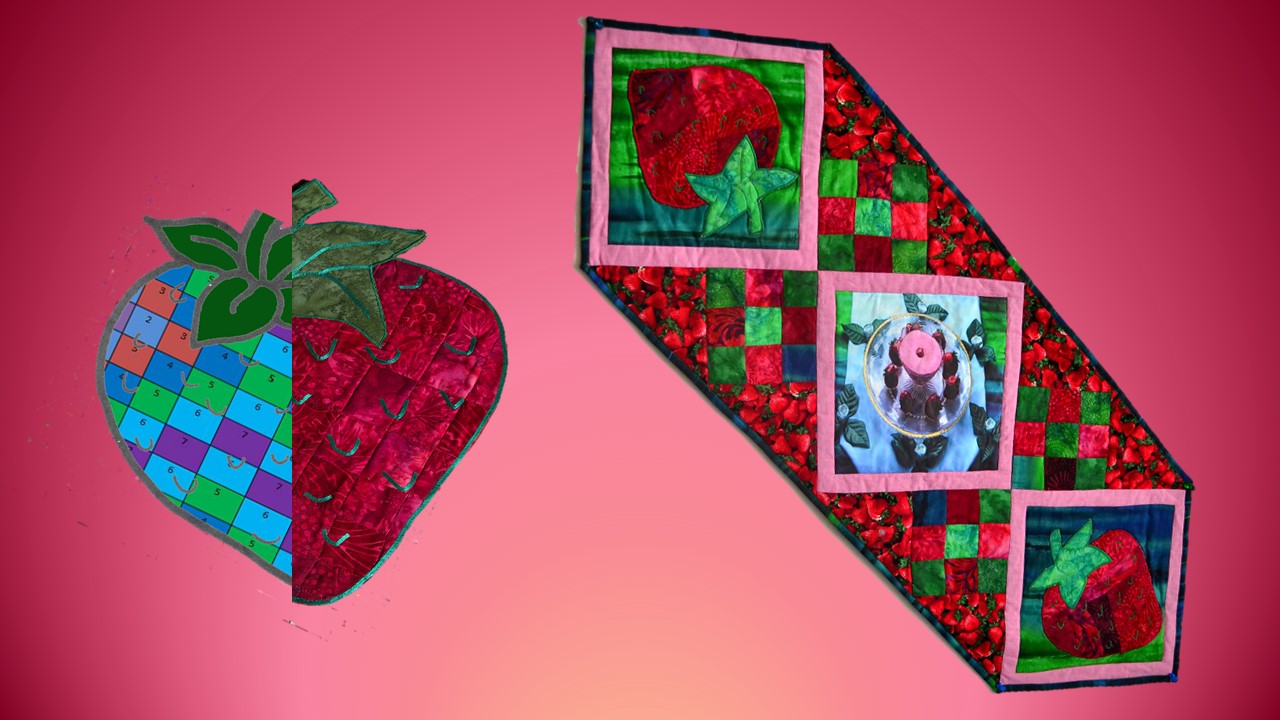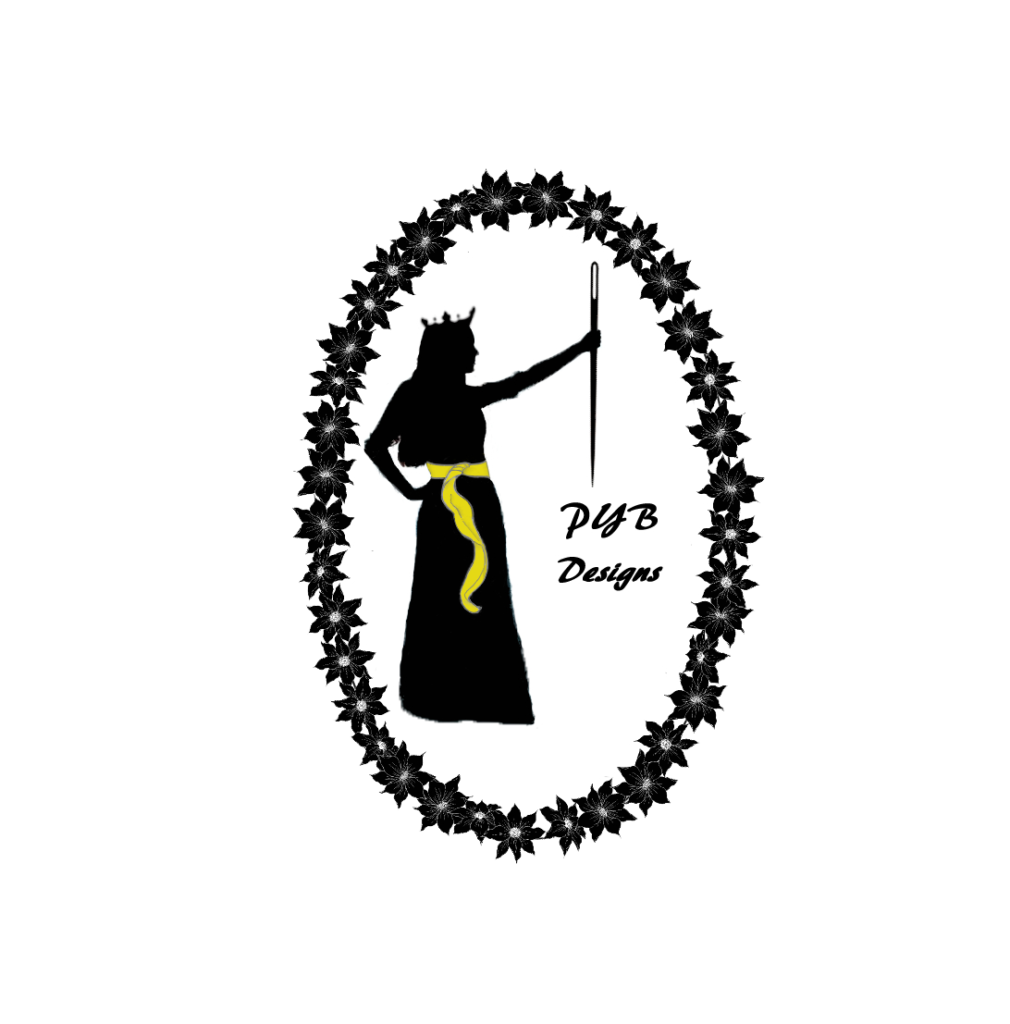
How the Princess YellowBelly team accepted our own challenge and transformed a Bargello table-topper into a stunning (if we do say so ourselves) farm-to-table runner.
We’ve heard the most dangerous words in the world are “we’ve always done it this way.”
Here at Princess YellowBelly Designs we take a certain amount of pride in the fact that we don’t allow traditional quilting “rules” to define the limits of possibility. Just because quilters have always done it one way in the past doesn’t mean that we won’t try doing something completely crazy just because it might be:
- Easier
- Faster
- More beautiful
- More unique
…Or all of those things at once!
Thinking outside the box is a lifelong challenge, and recently we found ourselves challenged to get out of a box we hadn’t even realized we were in.
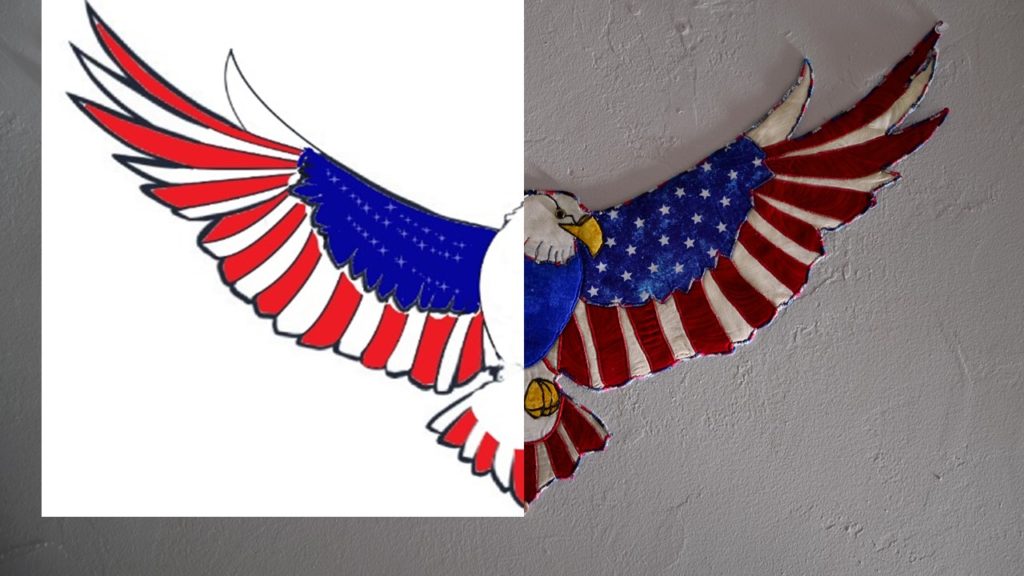
When one artist wanted to re-imagine one of our favorite original quilting patterns as a more traditional quilt, it kind of shocked us. Somehow we’d gotten into the habit of believing that we were creatively stretching our limits just because we were making new patterns.
What we weren’t asking ourselves was, “are we taking these original patterns to their full potential?”
Taking a Strawberry from Farm-to-Table Runner
One original PYB quilting pattern that we’re very fond of is the “Bargello Strawberry Table Topper.” That one was a lot of work in terms of figuring and technical difficulty – pretty standard for any Bargello design.
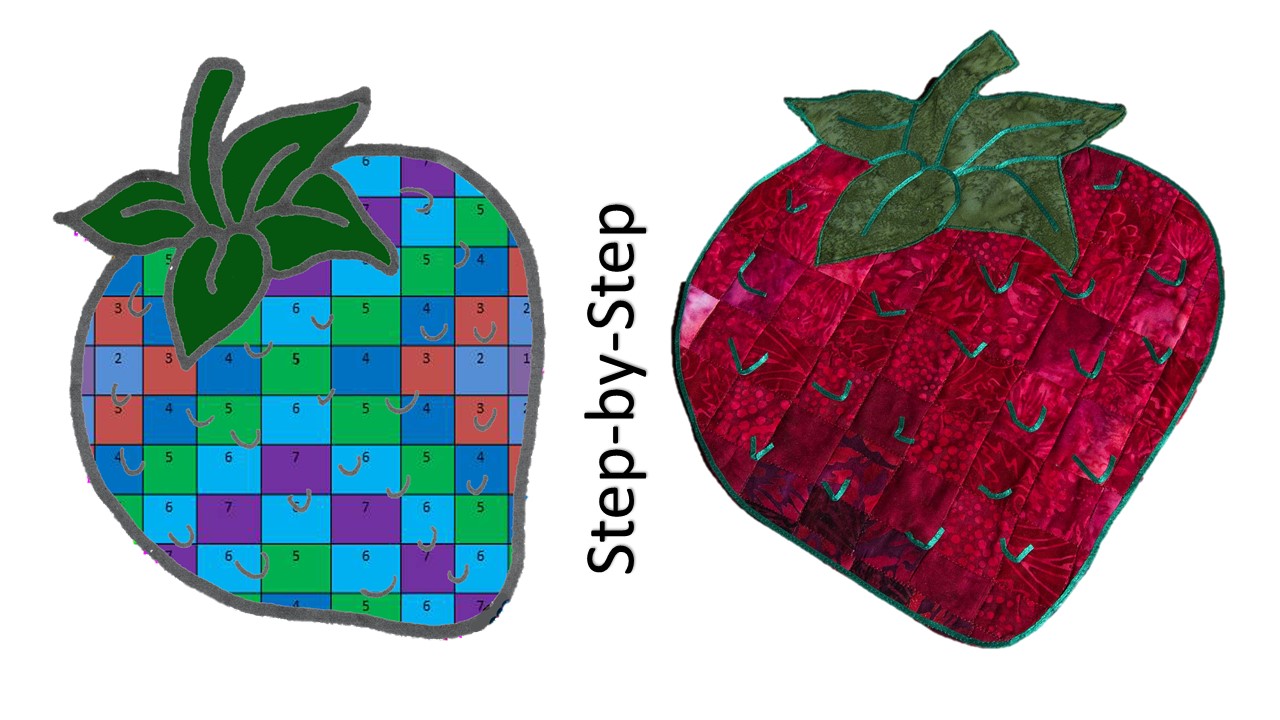
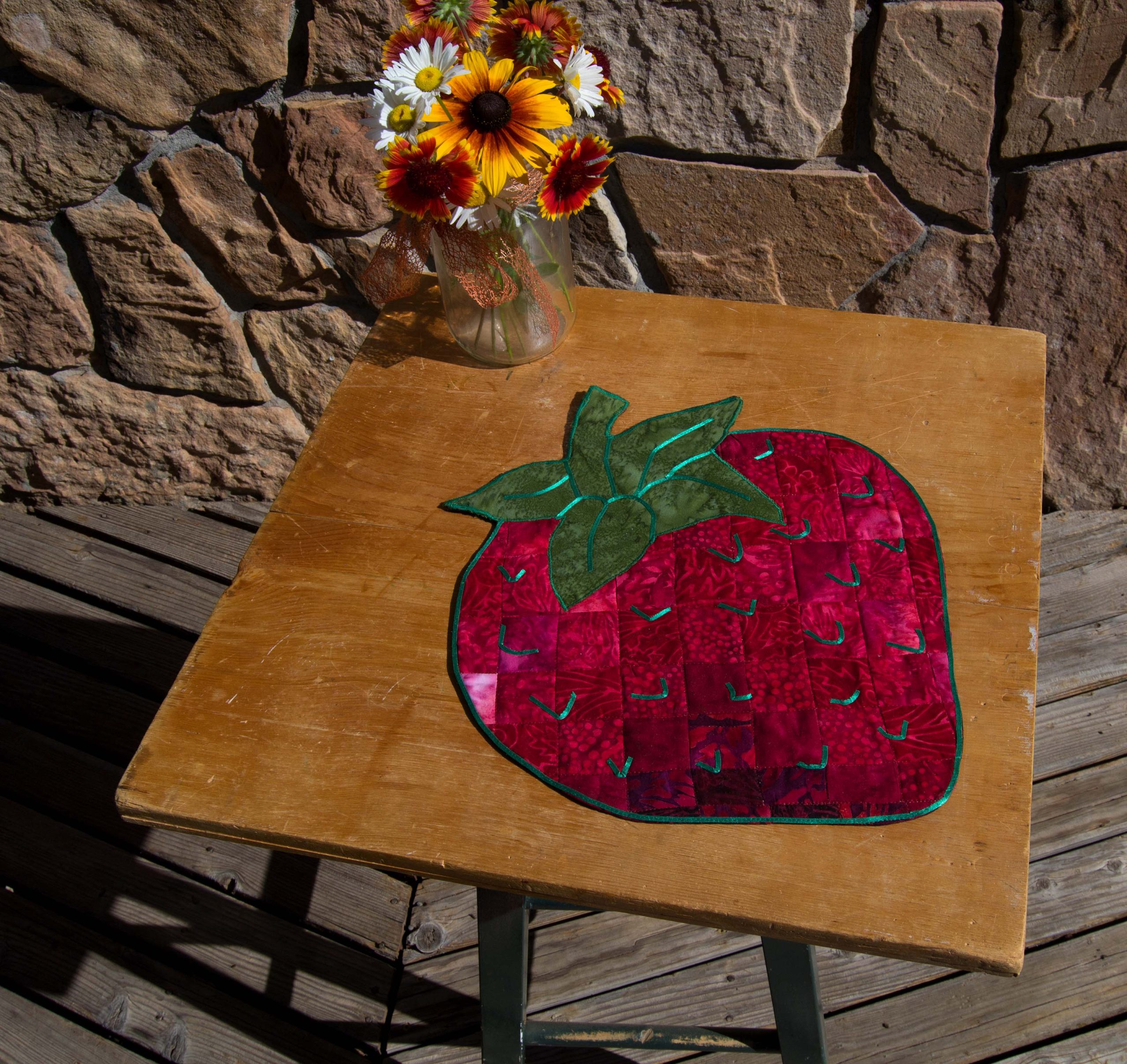
It came out beautifully, and we love hanging it on our wall every spring and summer.
After taking a second look at many of our patterns through the lens of “could we do this a different way,” the strawberry stood out to us as one that would be fairly easy to adapt, and possibly mixed with other patterns.
Questions to Help Guide Change
If you’re a fabric artist who likes to adapt and change patterns to serve your own purposes, here’re some of the questions that it’s good to ask yourself before setting out to change a pattern:
What are the elements?
Like a tasty recipe, every pattern is composed of a variety of materials, techniques, and steps. If you want to go about altering a pattern, you need to understand all the different elements in order to understand what needs to be changed, or not. For something as apparently simple as our Bargello Strawberry Table Topper, for example, there’re 4 distinct elements involved:
- A Bargello pattern
- A shaped outline
- Inside-out turn over style
- Appliqued (leaves and seed pips)
What – if any – elements are changeable?
Some elements can be altered with barely any thought or effort, and others are extremely precise in terms of measurements and outcome.
A Bargello pattern is one of the hardest to make any individual adaptations to because the size, width, and color layering is extremely precise and creates incredibly distinct optical illusions.
On the other hand a simple shape – strawberry outline – can be shrunk or enlarged, flipped, and adapted in dozens of ways without too much figuring.
How much do I want to change this?
If you’re starting with something like a quilting pattern – a rail-fence or pinwheel for example – it’s not too terribly hard to think of shrinking it. We make all different sizes of pinwheel blocks for backgrounds, borders, and table runners.
On the other hand, changing a small, contained pattern – like a shaped wall-hanging – into a full-size quilt requires quite a bit of creativity.
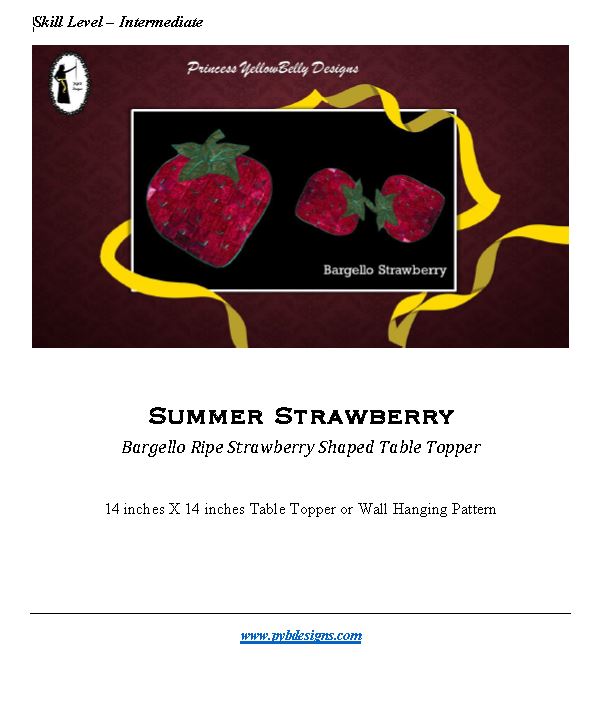
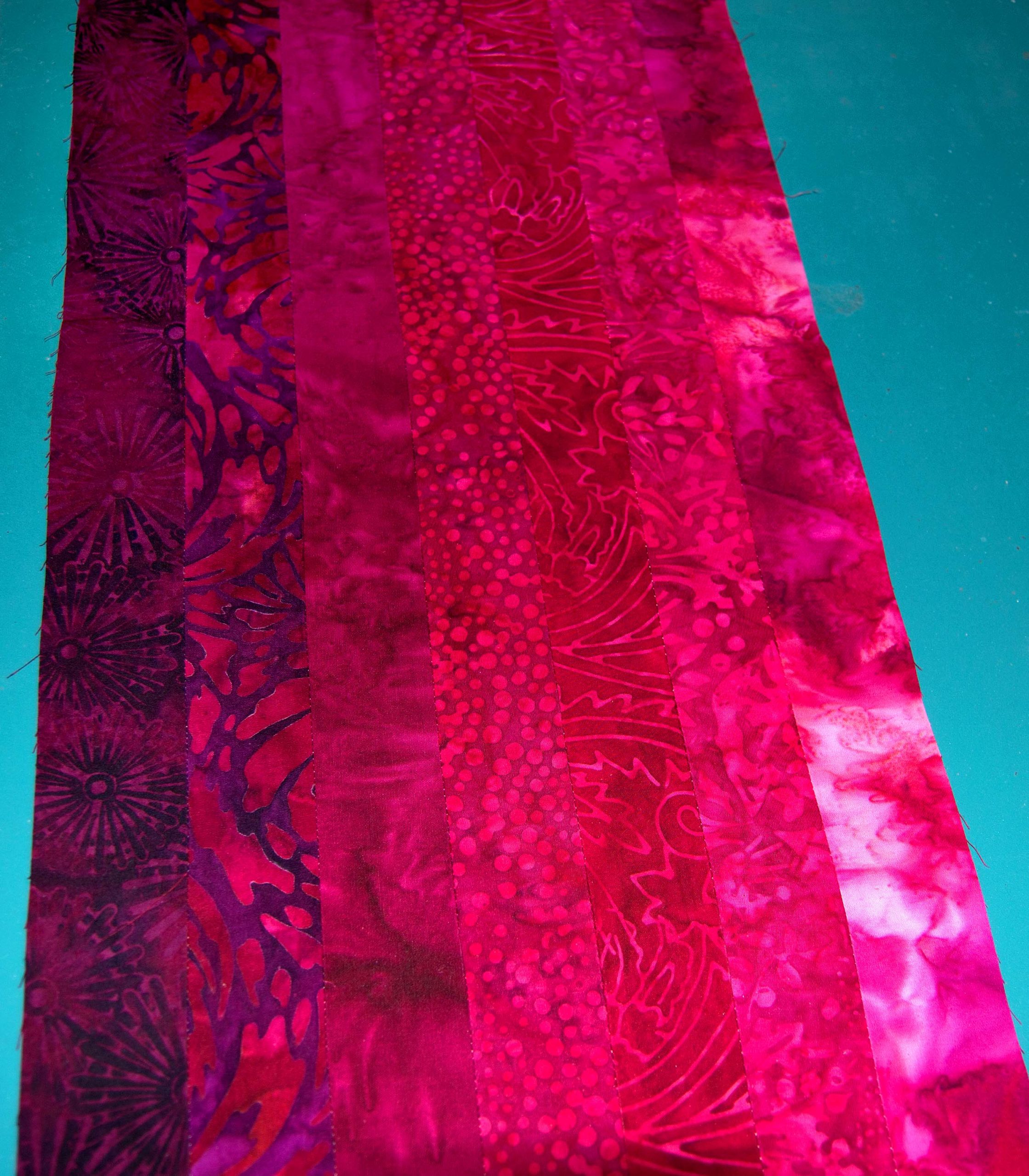
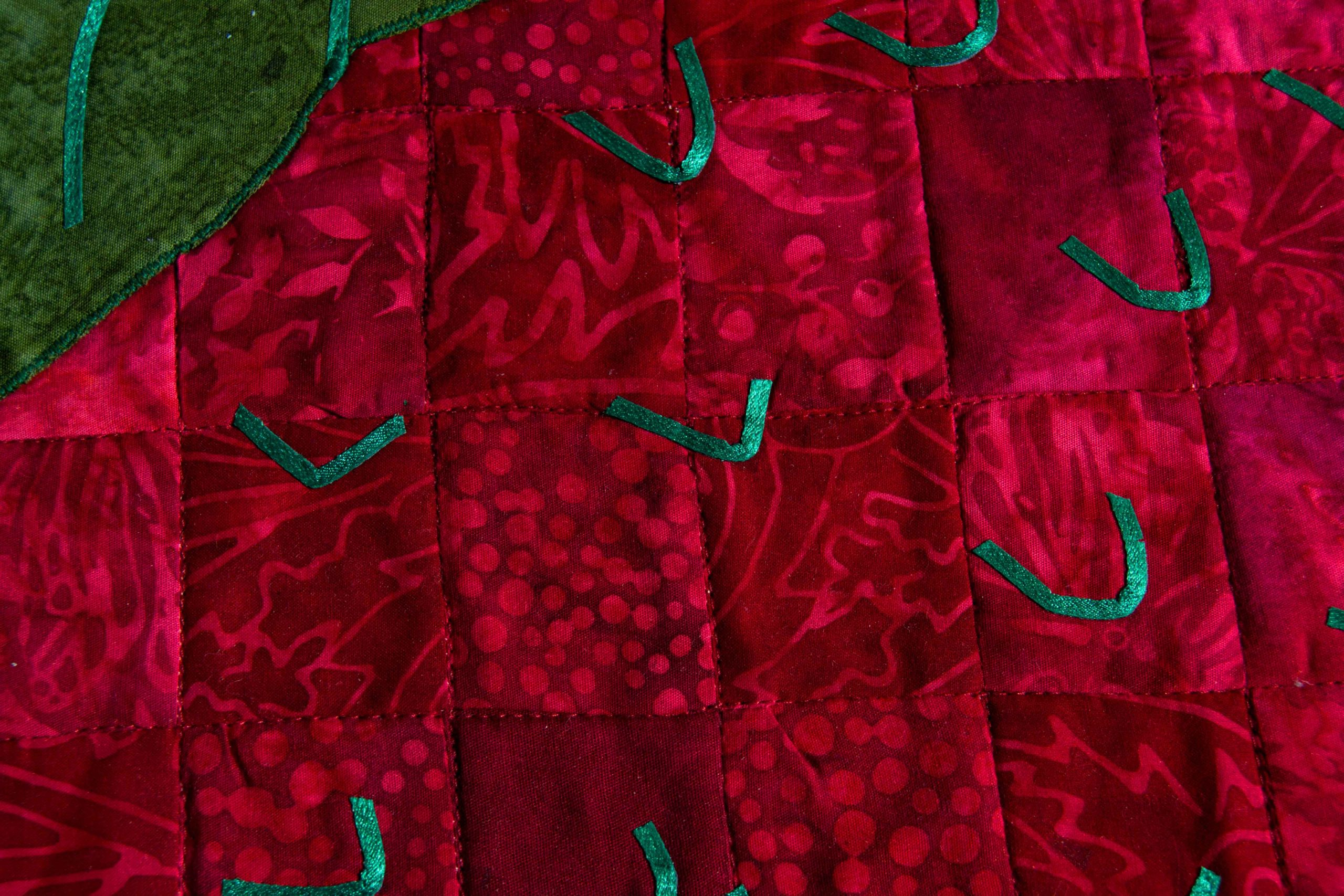
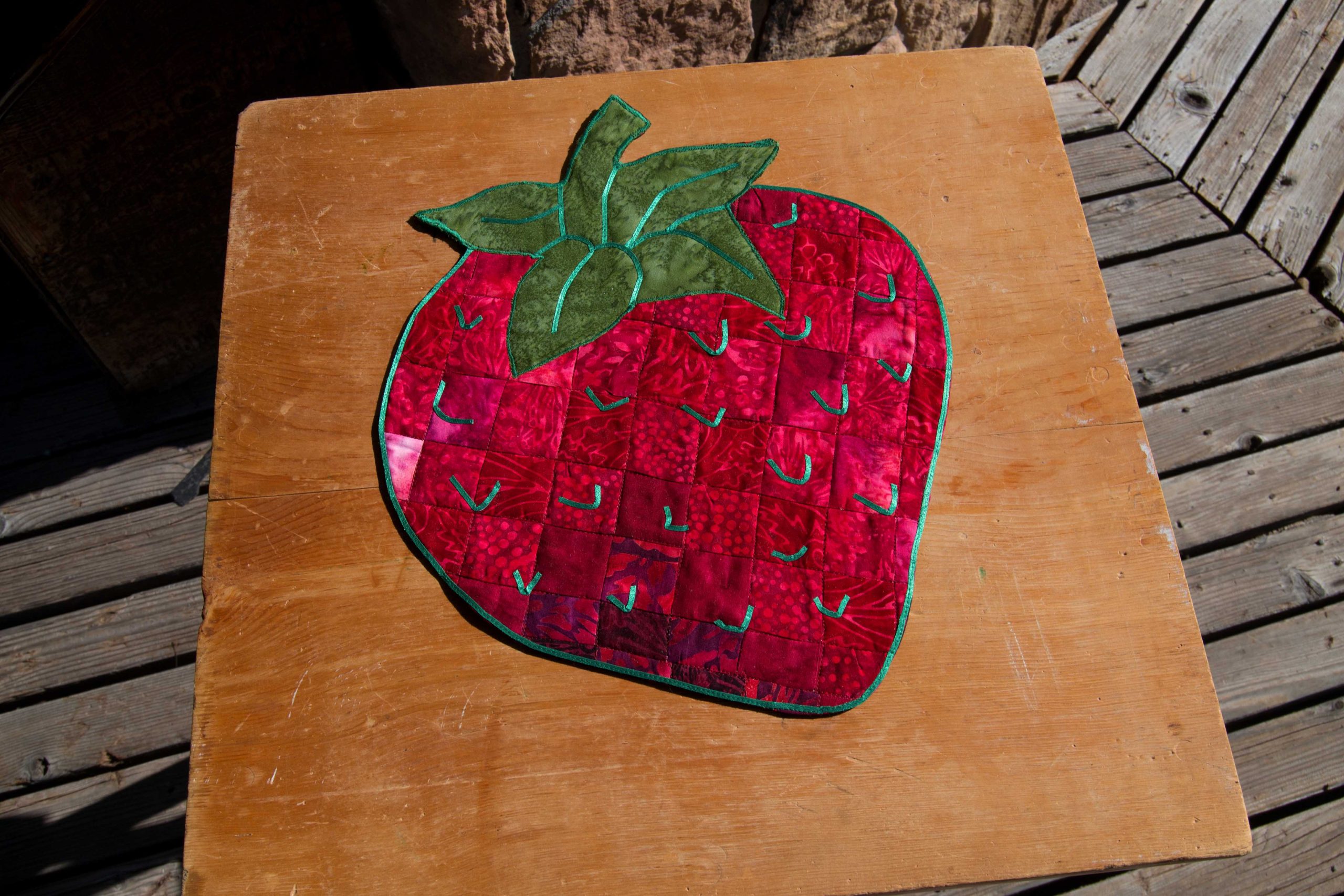
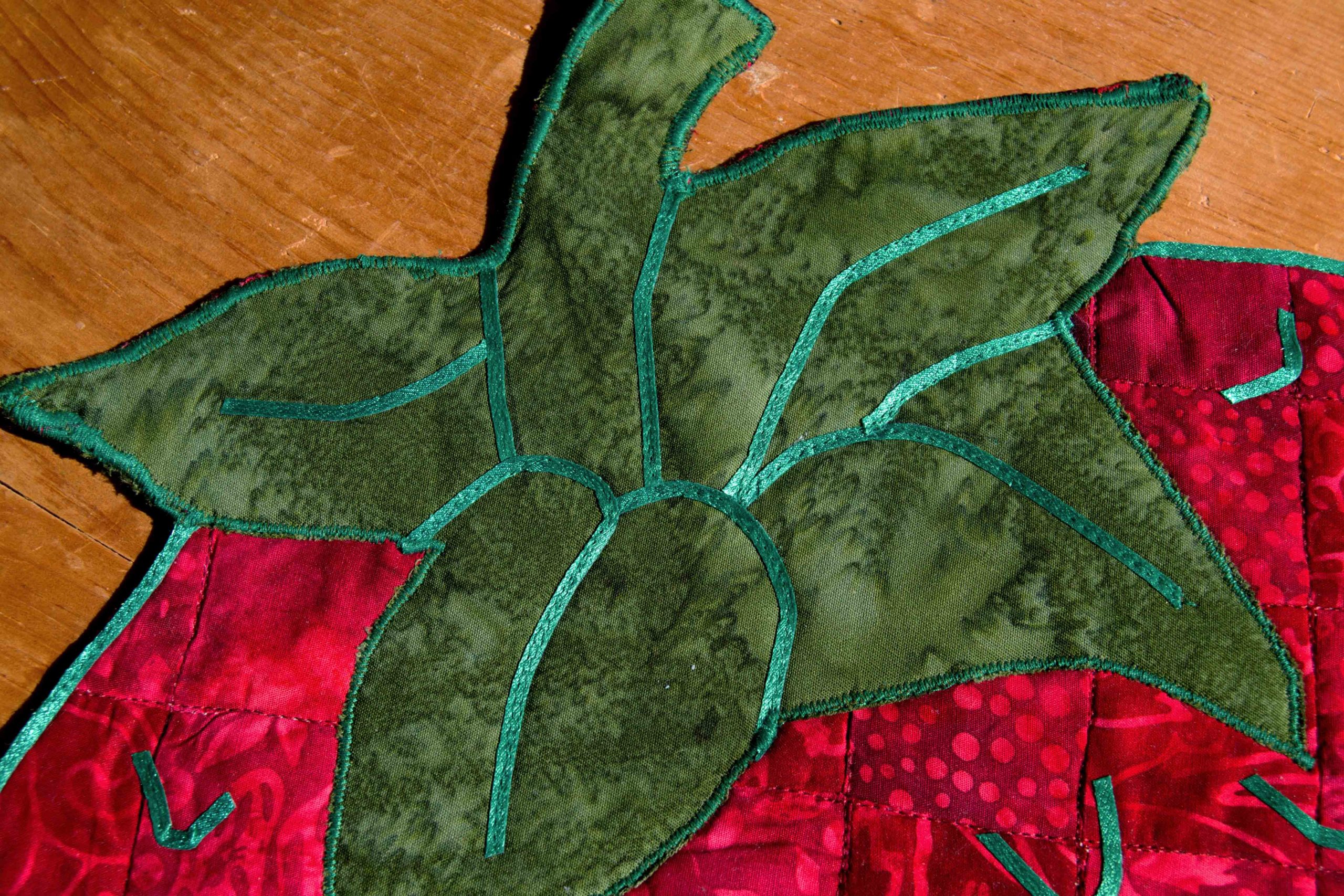
What do I have that would look good with this?
In our case, we had a printed panel of an original photo that we’d had made up for our shop. The strawberry fruit smoothie in a fine-dining setting makes for an eye-catching piece, and we’ve always wanted to do something more with it.
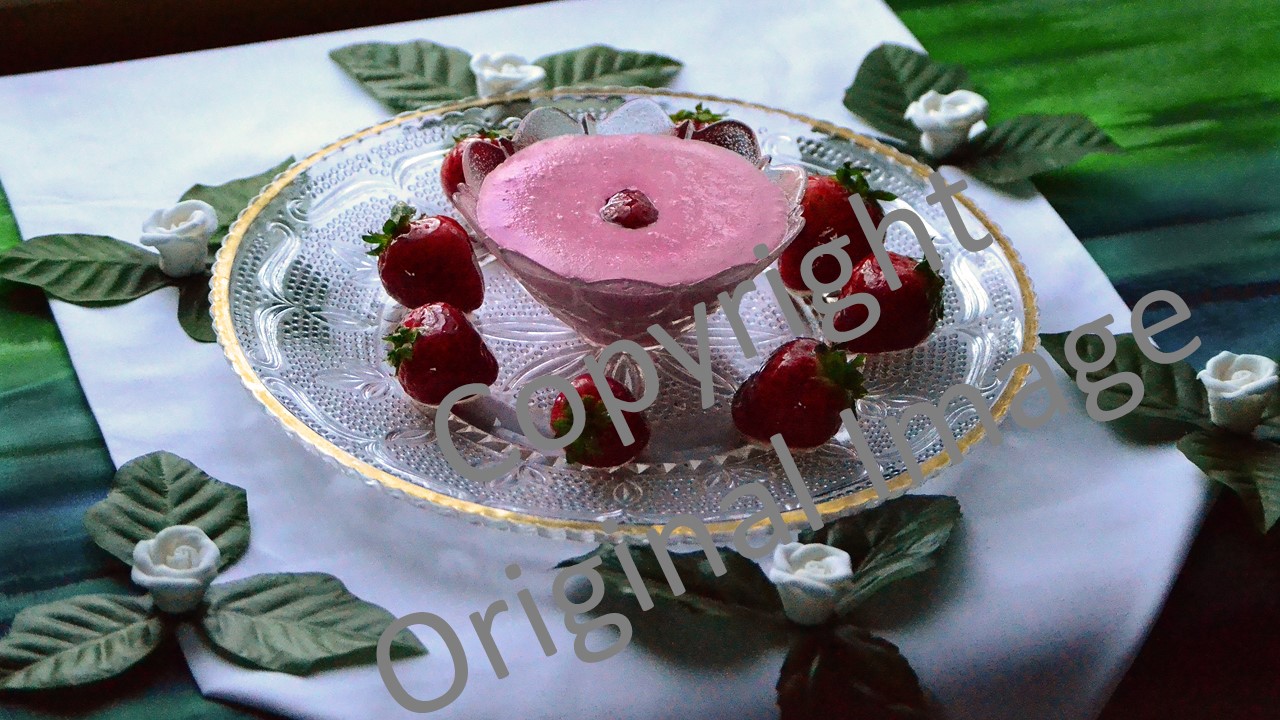
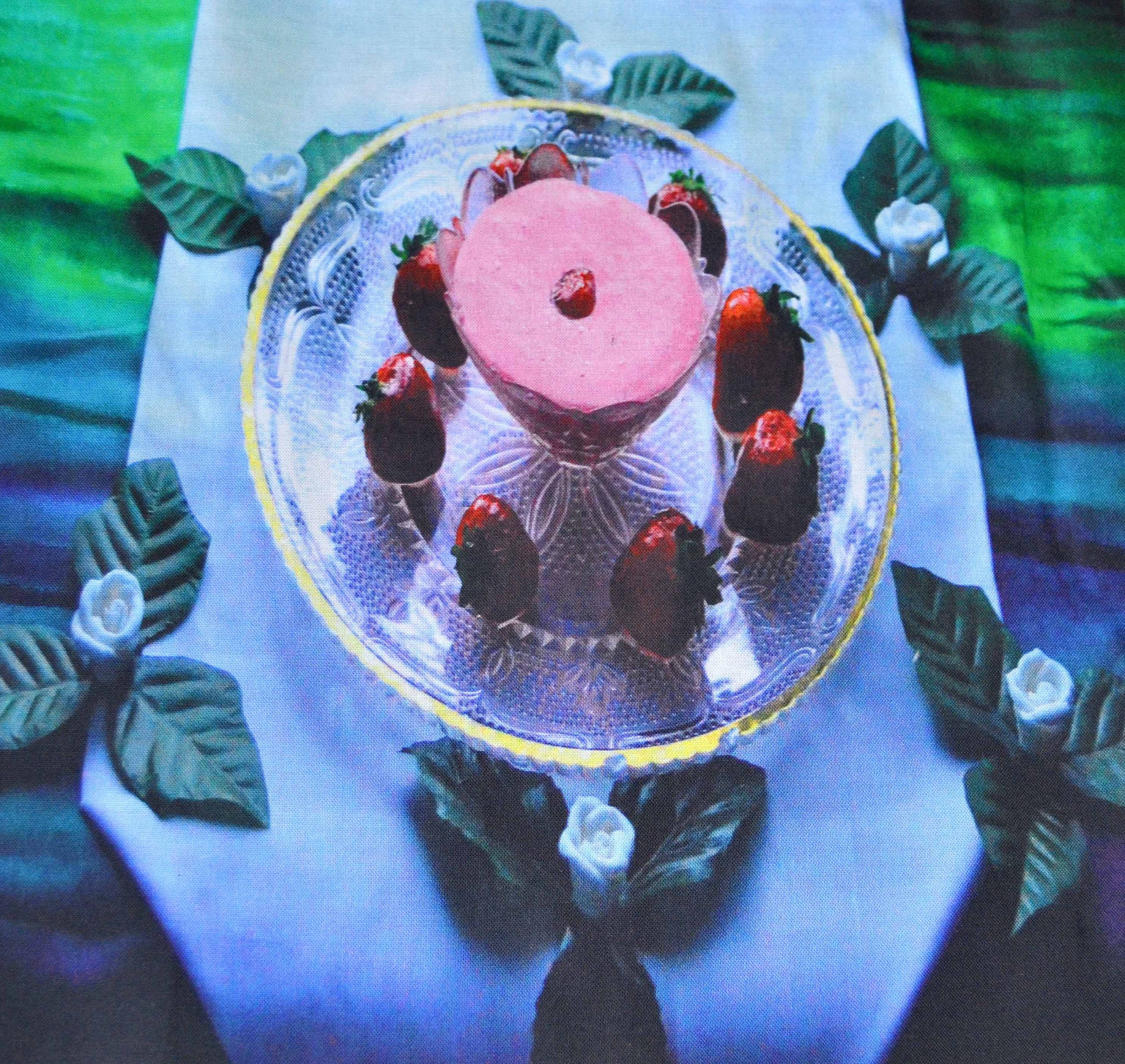
How well do the new elements match up?
We realized that the sizing of the two elements we had that were easily adaptable – the strawberry outline and the printed photo panel – were very close in size already. So we decided not to get too crazy and make a whole quilt, just a table runner.
How much time do I want to spend?
Making a big quilt takes time. Making a super-complicated wall hanging takes time. Making a table runner / table topper / baby quilt doesn’t take nearly as long – usually. We’ve got a lot of big projects already planned out this year, and we didn’t feel like adding a whole other quilt – and the 1-4 months investment in time.
So, we decided to change the Bargello Strawberry pattern from a single large table topper to a printed photo panel & shaped applique table runner.
What do I not have to figure out on my own?
As quilters and fabric artists we have a tendency to collect patterns. We’re especially fond of those that come in the little baggies at the quilt store, with a unique pattern and a simple style with as few specialty rulers as possible.
Lo-and-behold, we had a table runner pattern that was very generic, diamonds, triangles, 9-patch squares, and half-square triangles, that fit the measurements of our printed photo panel nicely.
Bringing the Strawberries from Farm-to-Table
It took us about a week of mornings, an average of 4 hours a morning for 5 days, to figure out how we wanted to transform the pattern to our own design.
Some of the challenges we faced included:
“Cropping” the strawberry smoothie printed photo panel to the right size (without losing any of the detailing that makes it so special)
Re-sizing the strawberry outline to fit the same size background panel as the strawberry smoothie block
Changing the Bargello pattern on the interior of the shaped strawberries to be reasonably easy and quick without sacrificing the visual effect (the whole point of using the Bargello pattern in the first place was to create the illusion of a “real” strawberry)
Figuring the 9-patch blocks to best fit in with the colors of the strawberry printed fabric we used for the outer triangles
Finding the right color big-block sashing strips to separate the jewel-tone greens and reds of all the different strawberry elements.
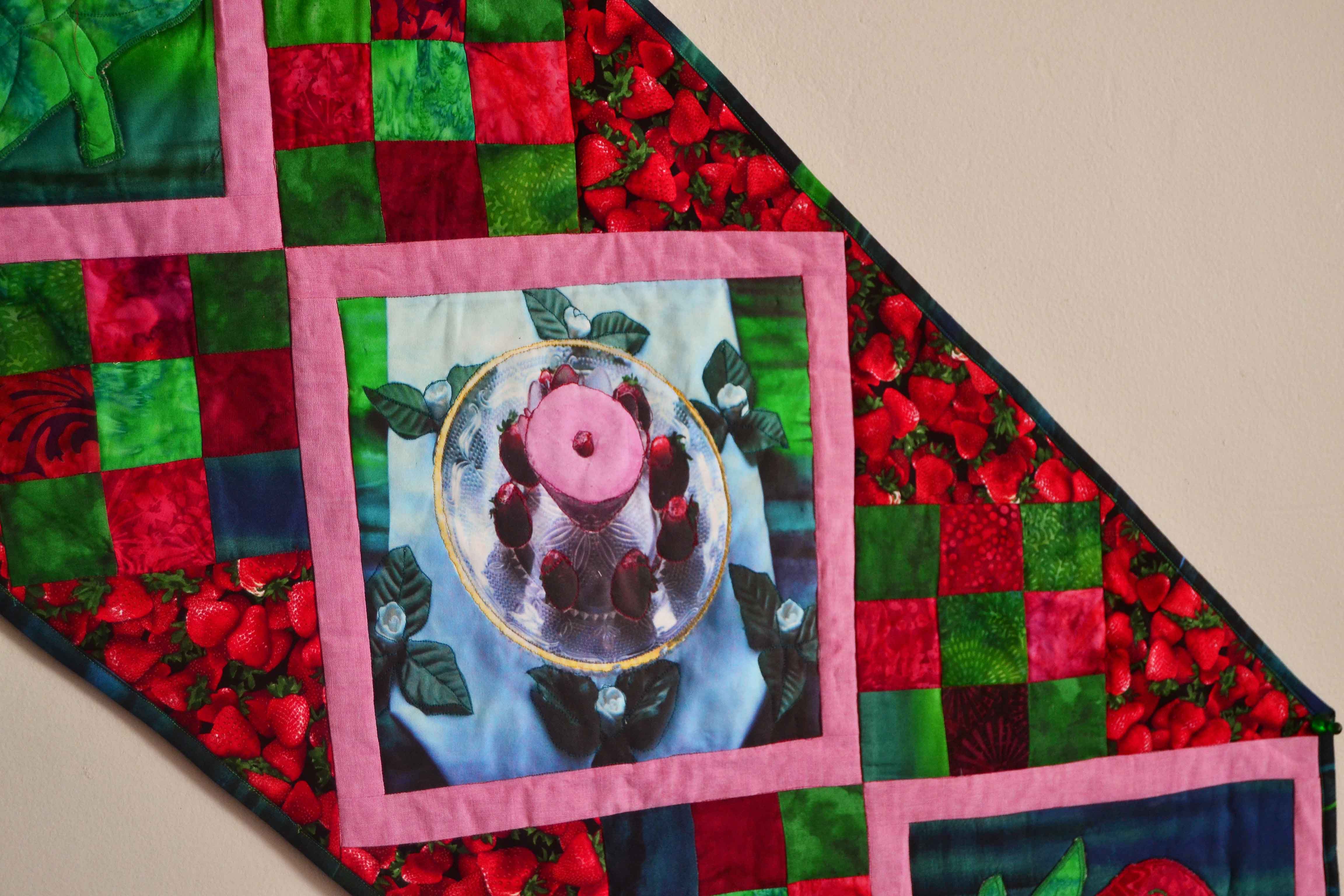
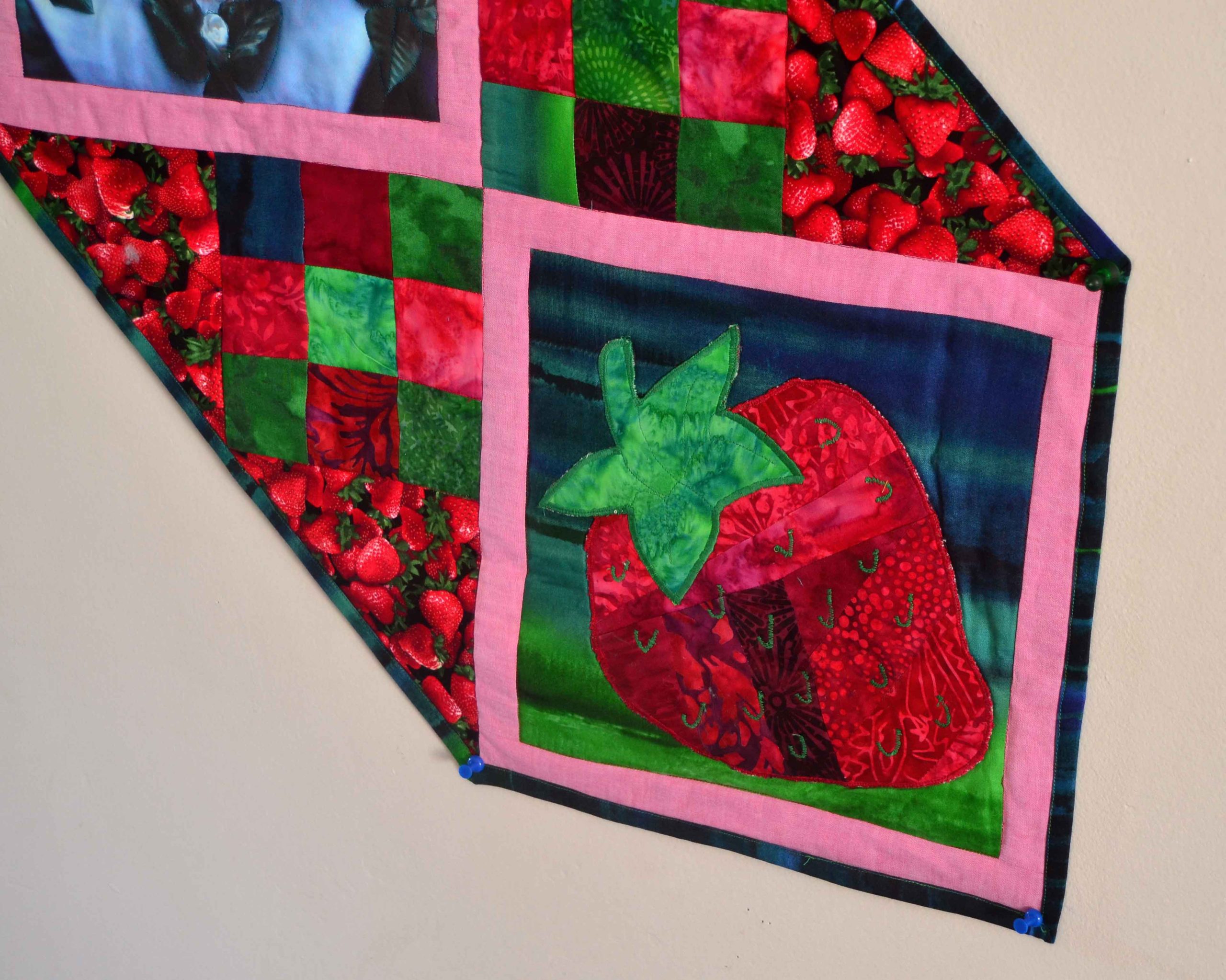
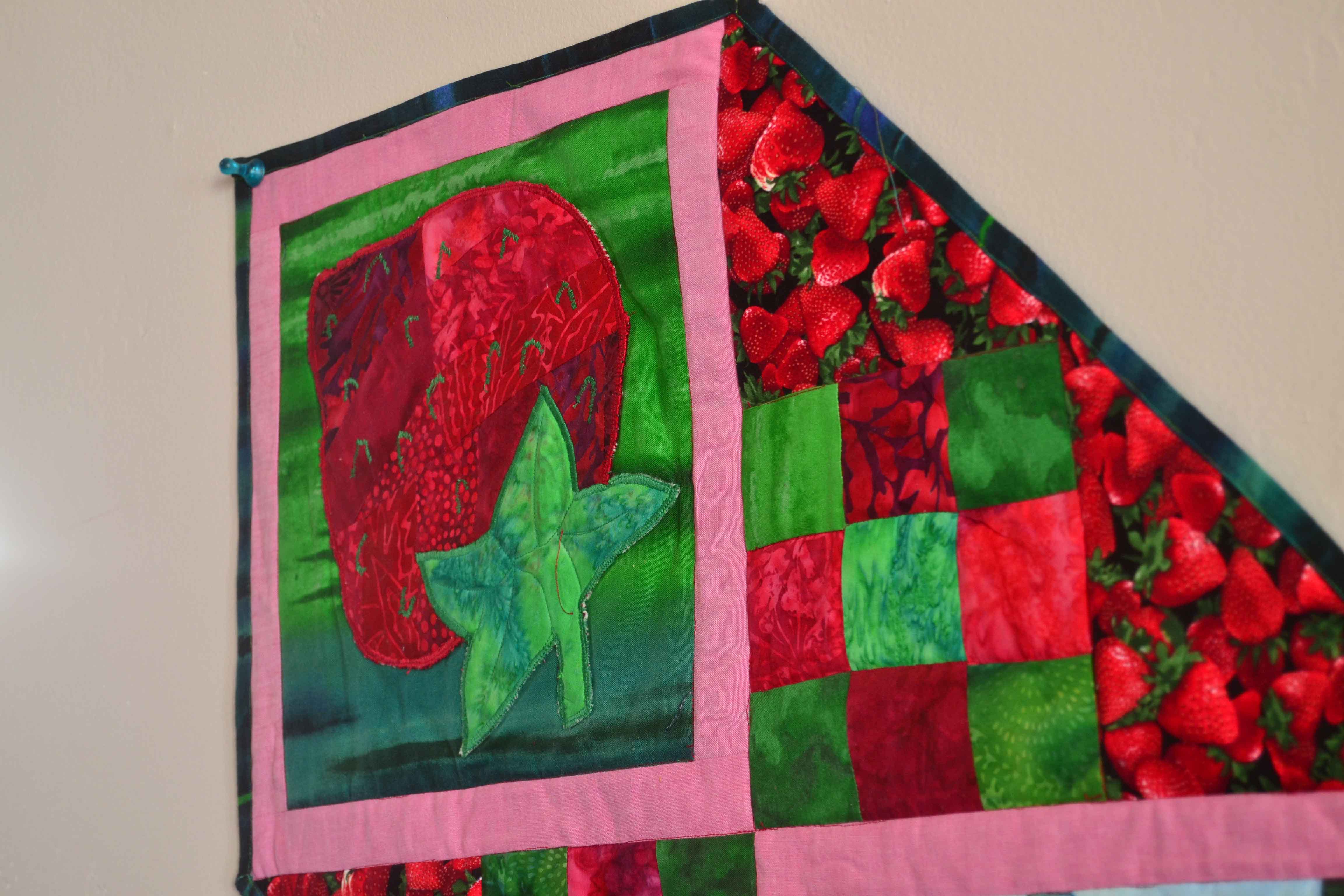
Overall, it was a simple and entertaining project. The result was better than we’d originally envisioned, and we discovered a much, much simpler way of creating the optical illusion effect on the shaped strawberries alone!
Once we were done tweaking our strawberry pattern, the table runner pattern, and our original printed photo panel, nothing looked much like it had to start with.
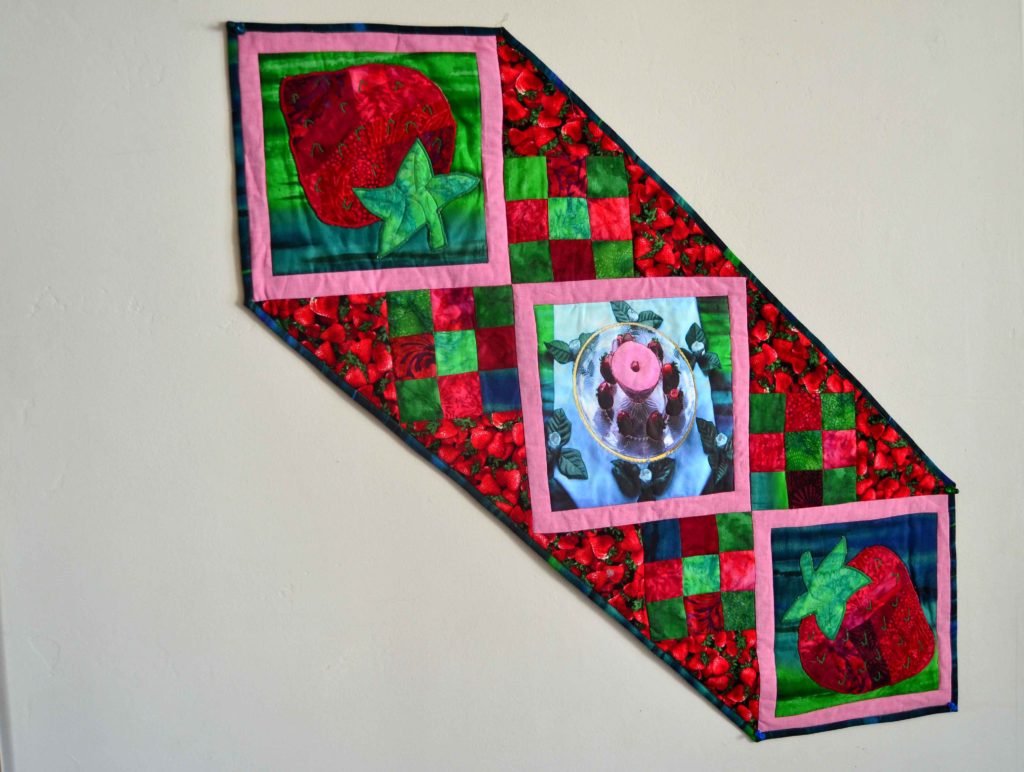
The result was – if we may be allowed a bit of a brag – stunning!
Want to Know How to Make Your Own “Farm-to-Table” Runner?
We took careful pictures and videos of every step of the process of creating this beautiful, strawberry farm-to-table runner, and we’ve turned it into an easy-to-follow video.
